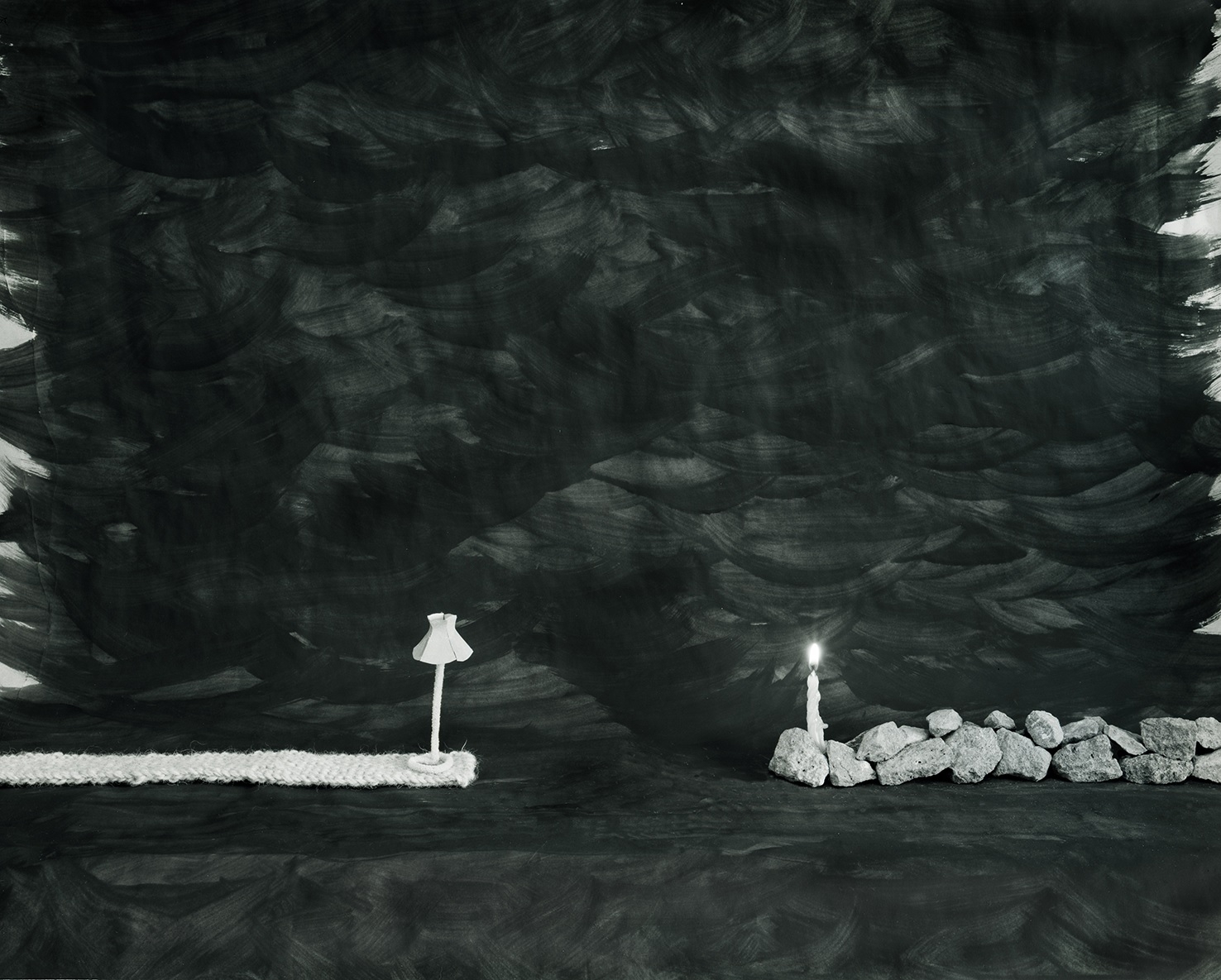Marie Shannon reviewed - May 2018
Rooms found only in the home
Marie Shannon
Adam Art Gallery Te Pātaka Toi
28 April – 24 June 2018
Reviewed by Mary-Jane Duffy
Rooms found only in the home organised by the Dunedin Public Art Gallery surveys Marie Shannon’s career since she graduated from Elam School of Fine Arts in the 1980s. If the photographer’s decisive moment makes photography a practice of the verb, then this exhibition reveals Marie Shannon as a photographer of the noun. Throughout the thirty plus years of her career, she has inquired into the meanings of home by making images full of objects. These objects are often domestic items in rooms or in the landscape or objects in the shape of houses or floor-plans of houses or sometimes houses themselves. There’s the perversity of electric heaters looking at a landscape; a house made of parmesan cheese; a tiny lighthouse beacon beaming across a carpet sea; a marquette for a bag; and maps of her days and places she’s lived in New Zealand. The way she plays with the scale of objects is charged with loneliness and humour.
Phone friends, 1990
At her artist’s talk at the Adam Art Gallery the day after the exhibition opened, Marie reflected on the way that writing allows her to create the pictures she isn’t able to take with her camera—the pictures the reader creates in their imagination. And there’s a number of her text works in the exhibition—works describing dreams and outlining ideas for projects. But not all of the text works are static—the exhibition also includes five video works. One of these details a series of conversations between Marie and her son Leo and their discussion about the contents of the rooms in the house he grew up in. I enjoyed the way these text works expand what a photograph can be.
I mentioned to a friend that I was surprised a survey of Marie’s work hadn’t happened before now. She said “Yes, but she has been overshadowed.” And it’s true. Marie was the partner of Julian Dashper who died in 2009, and who was at various times in his career, a major player in the New Zealand art scene. Julian is very present in this exhibition—in the photos of notes that say ‘I love you’; at the end of string that stretches from one pipe cleaner figure in Auckland to another in New York in Phone friends (1990); and as the writer of letters describing a residency in Germany in The Aachen faxes (2012). As I walked around the exhibition I couldn’t help thinking that much of this work is a long rambling conversation with Julian and his archive. But not only with Julian, with a community of artists that includes Peter Peryer, Merilyn Tweedie and Paul Cullen—all of whom are directly mentioned. And the conversation isn’t just about art, it’s about life as an artist: what it’s like to be on a residency during a European winter, to bring a child into the picture, and the push and pull of home.
There’s a lot of wit and sadness in this exhibition. The video work about the creative process of making sculpture out of margarine is hilarious, and the photographs of Julian’s notes are very moving. Overall it’s a well put together exhibition that charts the work of this important New Zealand photographer.
Mary-Jane Duffy is an art writer and poet, animal lover and beach connoisseur. She lives on top of a hill in the clouds of Wellington.







